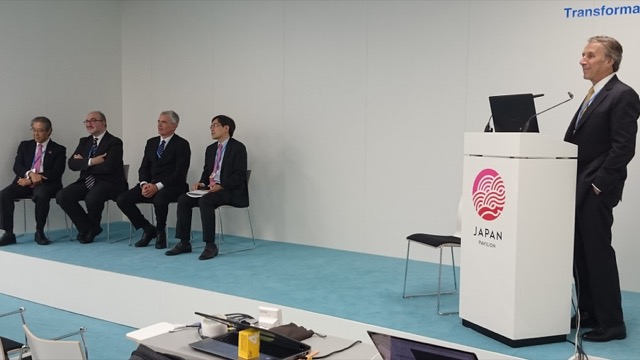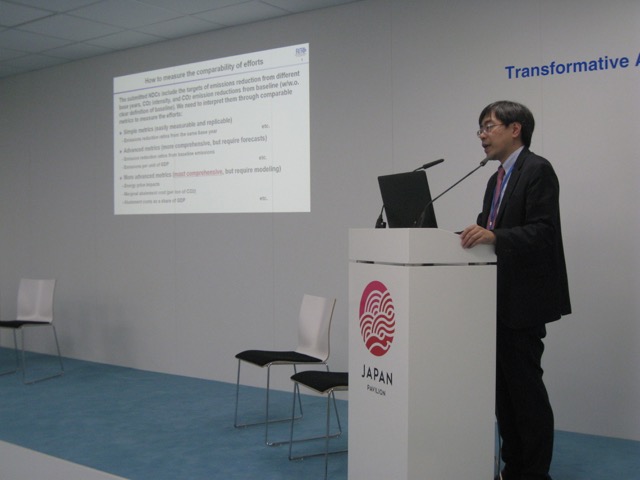Final Programme
Towards Sustainable Climate Change Response Measures under the Paris Agreement
Introduction (5 min)
- Raymond Kopp: Vice President, Energy and Climate Program and Senior Fellow, Resources for the Future
Presentation 1 (15min)
- Keigo Akimoto: Group Leader, Chief Researcher, Systems Analysis Group, Research Institute of Innovation Technology for the Earth
Presentation 2 (10min)
- Carlo Carraro: Professor of Environmental Economics, Ca’ Foscari University of Venice; and Scientific Director, Fondazione Eni Enrico Mattei
Presentation 3 (10min)
- Antonio Navarra: President, Euro-Mediterranean Center on Climate Change
Presentation 4 (15min)
- Hiroyuki Tezuka: Chair, Global Environment Strategy Working Group, KEIDANREN
Q&A (20min)
Session Summary
- Prof. Kopp introduced this session.
- Keigo Akimoto presented RITE’s work in assessing the targets contained in the Paris agreement: NDCs as well as long-term targets. As NDCs’s ambition is to be evaluated and raised through a Pledge and Review process that is not yet defined, the study offers tools to measure and compare the level of effort of the NDCs. Regarding long-term targets, Dr. Akimoto insisted on the importance of social and technological innovation to achieve the 2 degrees target with more realistic measures than very high explicit carbon prices.
- Carlo Carraro presented a FEEM study on how NDCs would impact the implementations of the Sustainable Development Goals (SDGs), through the calculation of an Aggregate Sustainability Development Index. Results show an overall positive impact.
- Antonio Navarra’s talk was on the underlying science to climate policy. He presented the history and evolution of models, revealing a trend towards convergence of models that is to say integration of models from various fields linked with climate change
- Hiroyuki Tezuka introduced the KEIDANREN’s Voluntary Action Plan and the clear similitudes that the NDCs submission process share with the plan.
- Questions and Answers
There was a comment on the usefulness of such analysis to coordinate the efforts of Parties, and how interesting it would be to try to model the Paris agreement itself in such approaches in order to simulate future scenarios of policy process. A more specific comment was made towards Carlo Carraro’s presentation, suggesting exploring how one coefficient (such a climate sensitivity) could influence trajectories.
One question was directed as Mr. Navarra on if there was a converging trend as well on how to transfer green technologies as completely as possible (not just maintenance after installation, but building the facilities from scratch). Mr. Navarra answered that a sound way to model consequences is to focus on the real consequences of temperature change in concerned regions.
One question was directed to Mr. Tezuka on how to implement plan like the Voluntary action plan in developing countries where coordination between industries and sectors is yet as organized as in Japan. Mr. Tezuka answered by evoking the collaborations that KEIDANREN is building with ASEAN countries, especially sharing all their emissions calculation methods and transparent methods.
Key Messages
This session highlighted the need for convergence on several levels to achieve the Paris agreement targets: climate modelling, climate policy assessment and design, climate policy and others sustainable development goals. Although convergence trends appear on the science side, it looks like policy design and implementation will need to rely on significant societal innovation to achieve the desired goals.
Name and organisation of the person(s) who prepared the summary
Haruo Kanaboshi, Bianka Shoai-Tehrani, Research Institute of Innovative technology for the Earth (RITE)
Photos


